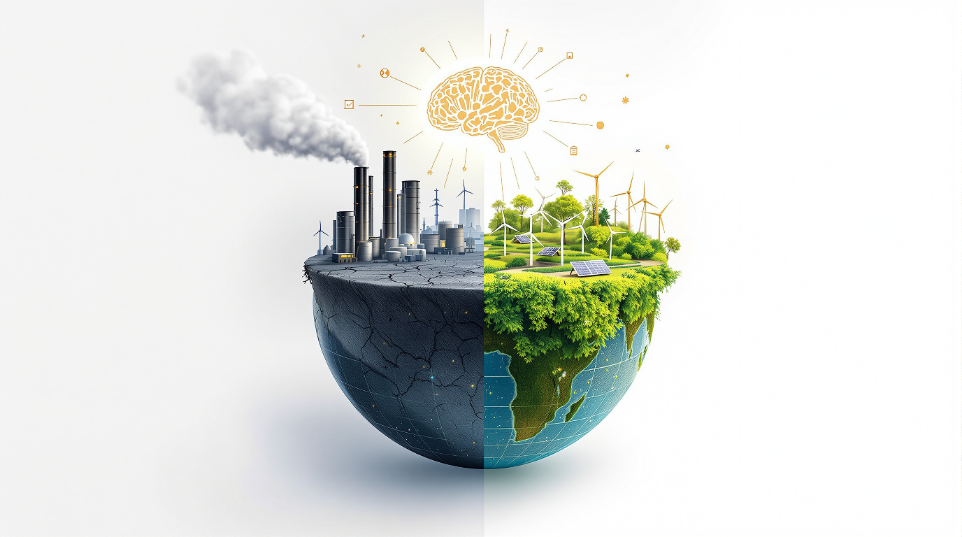AI’s Climate Impact May Not Be as Dire as Feared
Artificial Intelligence (AI) is often scrutinized for its environmental impact, particularly due to its energy consumption and carbon footprint. However, recent insights suggest that the narrative might not be as grim as previously feared. While AI indeed contributes to electricity demand and greenhouse gas emissions, its potential to mitigate climate change through innovation and efficiency cannot be overlooked.
The Energy Challenge of Artificial Intelligence
AI systems, especially generative AI models like ChatGPT and DALL-E, demand significant computational power. For instance, training large AI models can emit greenhouse gases equivalent to the annual emissions of multiple individuals in developed countries. Additionally, the global electricity demand from data centers, spurred by AI adoption, is projected to double between 2022 and 2026. By 2030, data centers could account for up to 21% of global energy demand, intensifying concerns about AI’s environmental footprint.
- Training the BLOOM model emitted 10 times the annual greenhouse gases of an average French citizen.
- AI interactions consume significantly more electricity than traditional web searches, raising questions about scalability.
- Predictions indicate AI’s power consumption could reach up to 20% of data center energy use by 2028.
AI’s Positive Contributions to Climate Action
Despite its energy challenges, AI offers unparalleled opportunities to fight climate change. It is actively revolutionizing several areas critical to climate resilience and environmental sustainability:
1. Optimizing Renewable Energy Systems
AI’s ability to analyze and optimize energy generation has already proven transformational. For instance, DeepMind’s AI-powered optimization of wind energy increased its economic value by 20%, making renewable energy sources more viable and cost-effective.
2. Predicting and Mitigating Climate Risks
AI enhances climate modeling, enabling more precise predictions of extreme weather events. Applications like Google’s FloodHub provide real-time flood warnings, mitigating disaster impact and improving community resilience.
3. Driving Energy Efficiency
AI-driven technologies empower consumers and industries to make energy-efficient decisions. For example, AI-powered eco-routing in Google Maps has prevented over 1 million tonnes of carbon dioxide emissions annually by suggesting fuel-efficient travel routes.
4. Accelerating Climate Research and Innovation
AI accelerates the development of new technologies needed to achieve net-zero emissions. From smart grids to breakthroughs in carbon capture, AI is vital in speeding up innovations that reduce environmental harm.
Balancing AI Adoption and Sustainability
To ensure AI’s growth aligns with environmental goals, experts recommend strategies to reduce its energy impact:
- Adopting energy-efficient data center hardware and cooling systems.
- Investing in AI model training optimizations to reduce computational overhead.
- Incorporating renewable energy sources to power AI infrastructure.
Institutions like MIT Lincoln Laboratory are already demonstrating how sustainable AI practices can be paired with cost savings. By reducing AI’s energy intensity at scale, we can create a path where technology advancements and environmental sustainability coexist.
The Big Picture: AI as a Climate Ally
While AI does contribute to higher energy consumption, its applications in combating climate change could outweigh its environmental costs. From improving energy systems to revolutionizing behavioral interventions, AI’s role in the climate fight is multifaceted and impactful. By implementing sustainable practices and aligning AI development with environmental policies, we can harness its full potential without exacerbating the climate crisis.
In conclusion, rather than viewing AI as a liability in the battle against climate change, it should be seen as a powerful tool that, when managed responsibly, can significantly enhance global climate resilience. The narrative of AI and climate change is not one of doom but of opportunity and innovation.
“`
